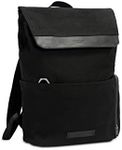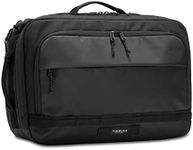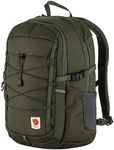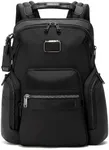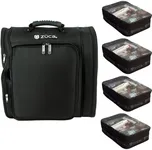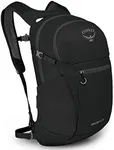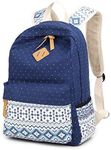Buying Guide for the Best Work Backpacks
Choosing the right work backpack is essential for ensuring that you can carry all your necessary items comfortably and securely. A good work backpack should be durable, well-organized, and suitable for your daily needs. Here are some key specifications to consider when selecting a work backpack, along with explanations to help you make the best choice for your requirements.Size and CapacitySize and capacity refer to how much the backpack can hold, usually measured in liters. This is important because it determines how much you can carry. Smaller backpacks (15-20 liters) are suitable for minimalists who carry just a laptop and a few essentials. Medium-sized backpacks (20-30 liters) are ideal for those who need to carry additional items like lunch, gym clothes, or documents. Larger backpacks (30+ liters) are best for those who need to carry a lot of gear or travel frequently. Consider what you need to carry daily and choose a size that fits those needs without being too bulky.
Laptop CompartmentA laptop compartment is a dedicated padded section within the backpack designed to protect your laptop. This is crucial for anyone who carries a laptop to work. The size of the compartment should match your laptop size (e.g., 13-inch, 15-inch, 17-inch). Ensure the compartment is well-padded and secure to prevent damage. If you frequently carry a laptop, this feature is non-negotiable.
Material and DurabilityThe material of the backpack affects its durability and weather resistance. Common materials include nylon, polyester, and leather. Nylon and polyester are lightweight, durable, and often water-resistant, making them good for everyday use. Leather is stylish and durable but can be heavier and less weather-resistant. Consider your daily environment and choose a material that offers the right balance of durability, weight, and style for your needs.
Comfort and ErgonomicsComfort and ergonomics refer to how the backpack fits and feels when worn. Look for padded shoulder straps, a padded back panel, and an adjustable sternum strap or waist belt. These features distribute weight evenly and reduce strain on your back and shoulders. If you have a long commute or carry heavy loads, prioritize comfort to avoid discomfort and potential injury.
Organization and PocketsOrganization and pockets are about how well the backpack helps you keep your items sorted. Multiple compartments, including smaller pockets for accessories, help you stay organized. Look for features like pen holders, key clips, and quick-access pockets for items you need frequently. If you carry a lot of small items or need to keep things organized, choose a backpack with ample organizational features.
Security FeaturesSecurity features include elements like lockable zippers, hidden pockets, and RFID-blocking compartments. These are important for protecting your belongings, especially if you commute in crowded areas or travel frequently. If security is a concern, look for backpacks with these features to keep your items safe from theft.
Style and AestheticsStyle and aesthetics refer to the overall look of the backpack. This is important because your backpack is an extension of your personal style. Consider the color, design, and overall appearance. Choose a style that matches your professional environment and personal taste. If you work in a formal setting, a sleek, minimalist design might be best. For more casual environments, you can opt for something more colorful or trendy.

